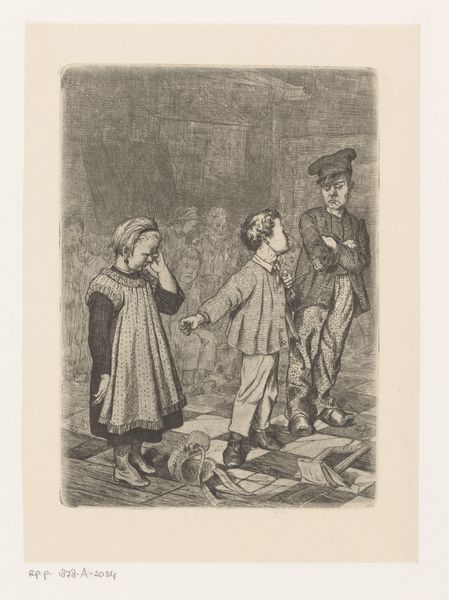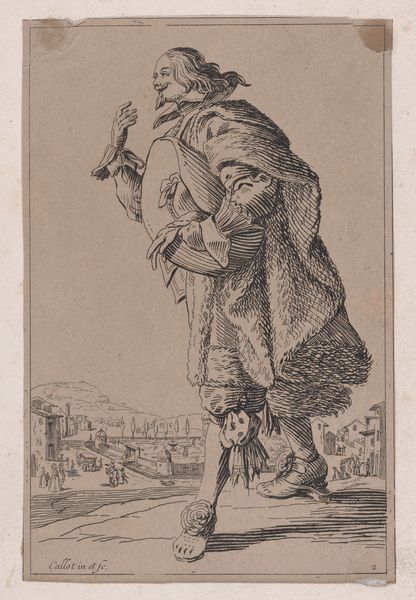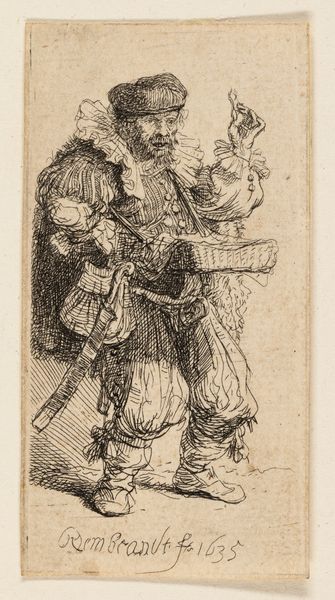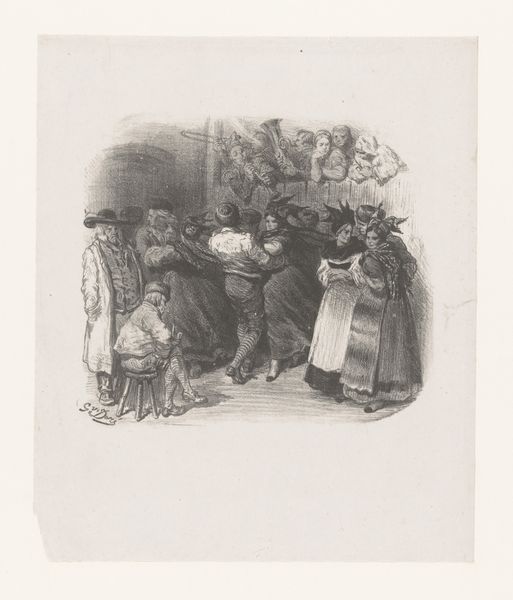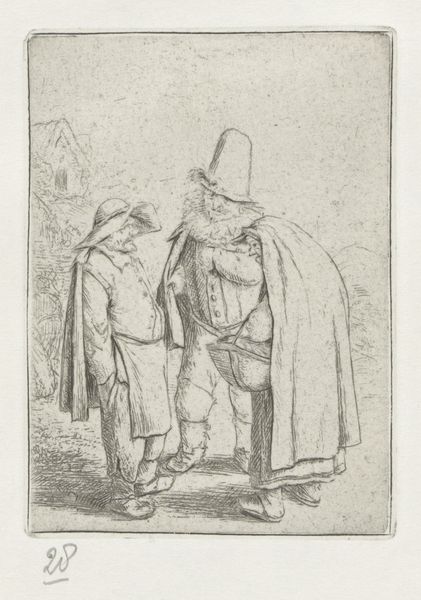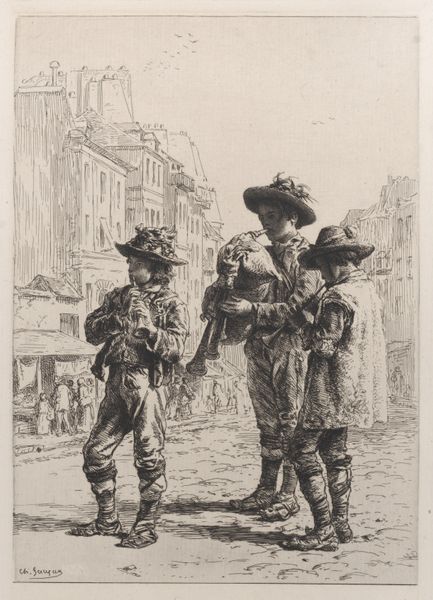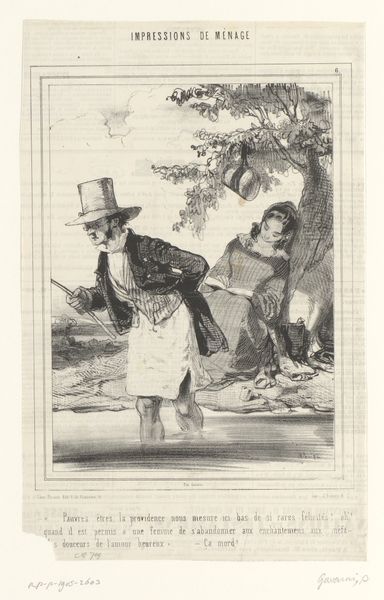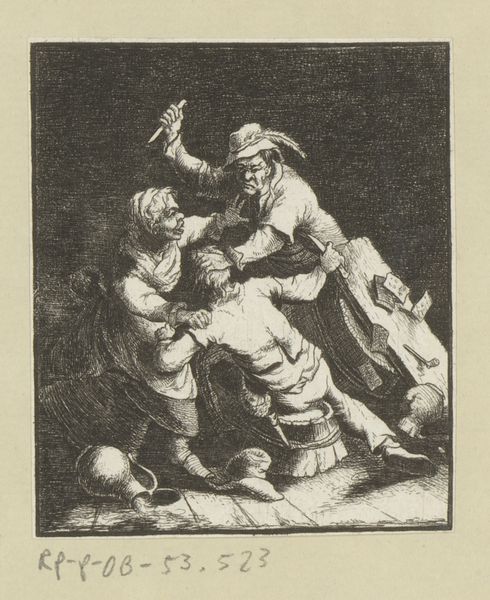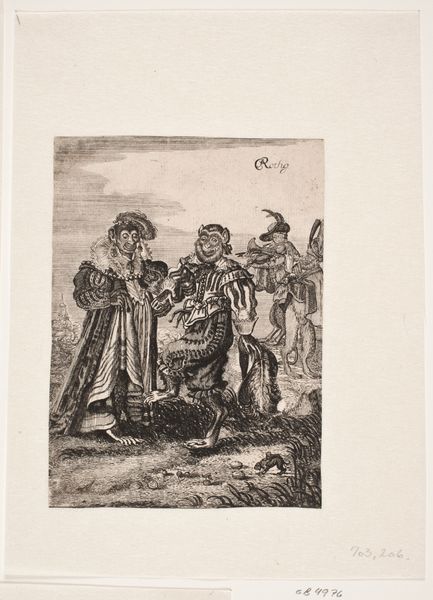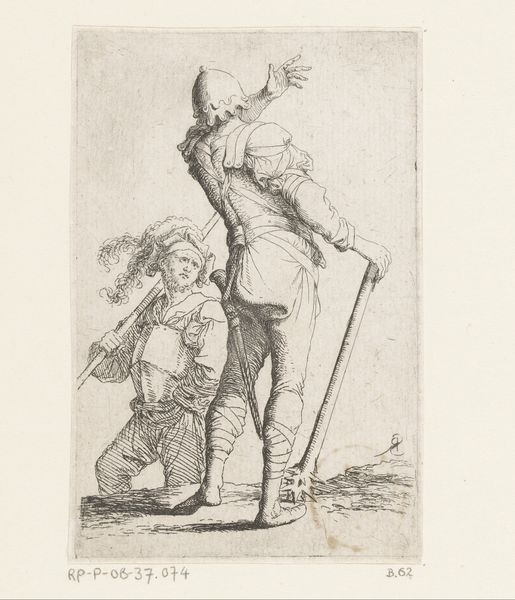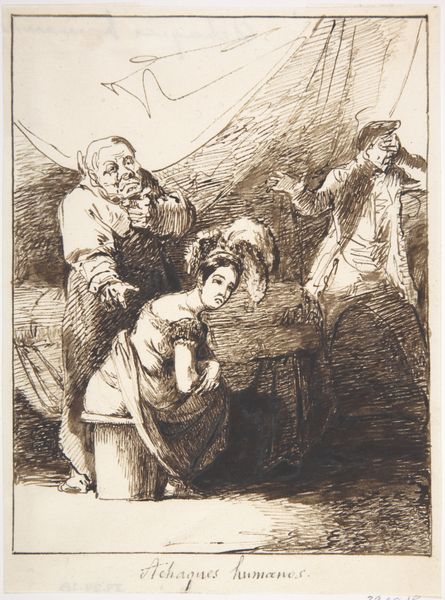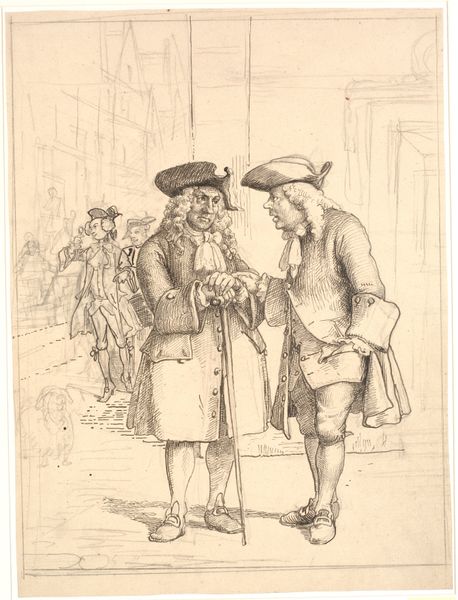
Dimensions: plate: 21.91 × 17.78 cm (8 5/8 × 7 in.) sheet: 33.97 × 28.89 cm (13 3/8 × 11 3/8 in.)
Copyright: National Gallery of Art: CC0 1.0
Adolph Menzel created this print of Hamlet and Polonius using etching, a process with a long history in both art and industry. The image begins as a polished metal plate, coated with an acid-resistant ground. The artist then scratches through this ground with a needle, exposing the metal below. When the plate is immersed in acid, lines are eaten away where the metal is bare. This painstaking process yields an image of great detail and tonal range. The density of fine lines creates a palpable sense of texture, evoking the characters' elaborate garments. Notice how Menzel uses this to maximum effect, contrasting Hamlet's flamboyant attire with Polonius's heavy fur coat, hinting at their different social roles. Prints like this one democratized artmaking, as multiple impressions could be made and distributed widely, connecting artistic expression to broader social forces. Appreciating the material and process behind "Hamlet and Polonius" allows us to move beyond simply admiring the image, and instead consider its cultural significance.
Comments
No comments
Be the first to comment and join the conversation on the ultimate creative platform.
